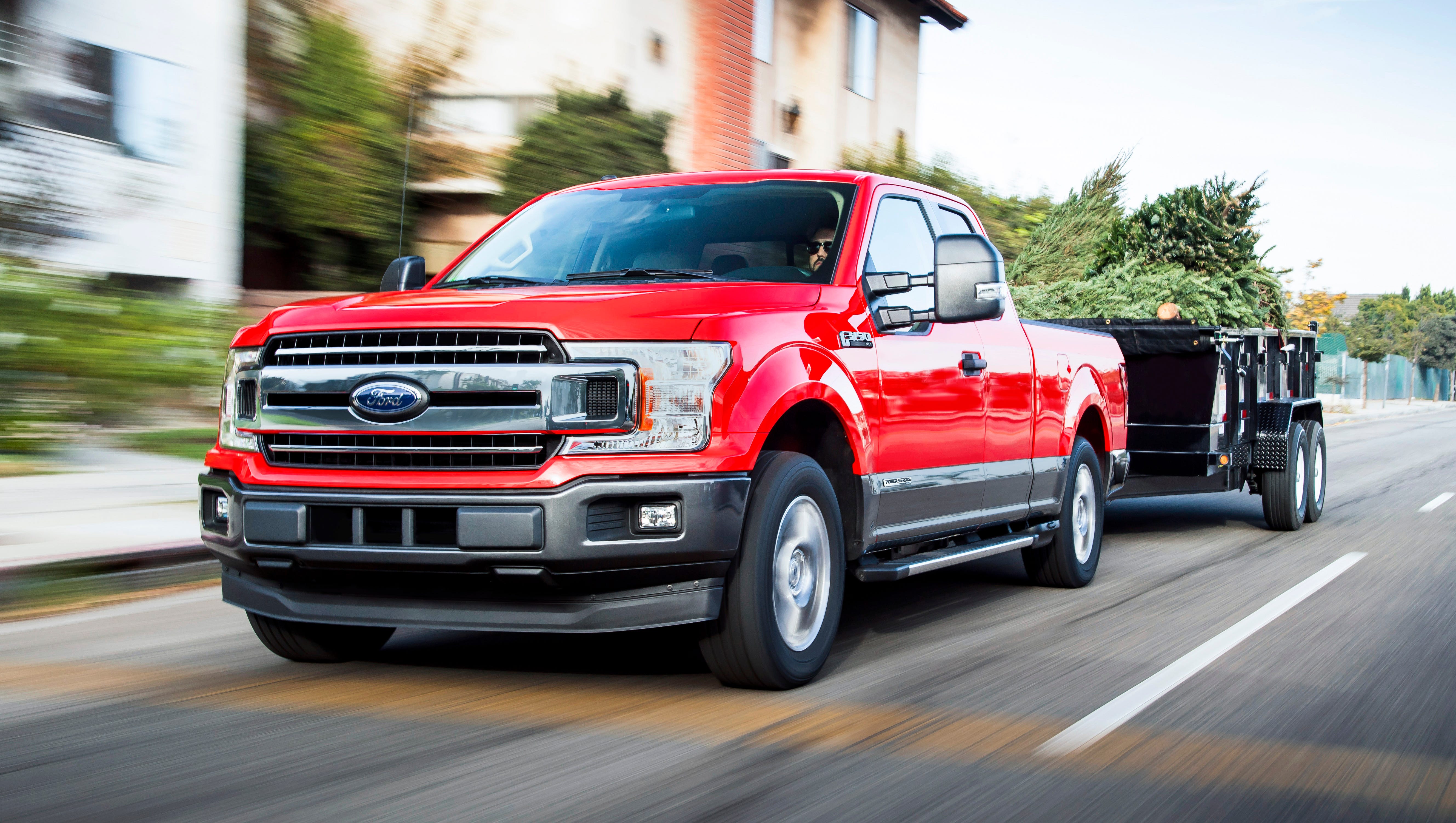Ford F-series, Mercedes dominate with same playbook
 Henry Payne
Henry PayneNashville – Mercedes-Benz and Ford Motor Co. would seem an unlikely couple.

But in the American auto market they have used similar strategies to carve out dominant, cash-gushing positions in the industry’s two most lucrative segments: luxury vehicles and large pickup trucks. Both automakers, industry insiders say, have sliced the market so finely with so many different models that few will dare challenge their supremacy.
Mercedes leads an elite Big Three in luxury – BMW and Lexus are the other two – that sells more than 300,000 vehicles a year. Only one other automaker – Audi, with a growing 226,000-plus in sales – threatens their dominance.
A Big Three also rules pickups: Ford, Chevrolet and Ram. Their domination is even more dramatic with each cresting 500,000 sales in 2017 (Ford almost topped the 900,000 mark). Chevy’s premium cousin, GMC, sold another 250,000 in 2017.
But it’s Ford that has ruled the pickup roost for the past 41 years, and it does so in part by giving pickup buyers more than 200 choices in all their configurations.
“Ford and Mercedes have extraordinary engineering capability. They can slice the cheese so thin,” says veteran auto analyst Joe Phillippi of Auto Trends Consulting. “The Germans can offer you an incredible portfolio of transmissions, styles and drivetrains. For the Detroit Three, pickups are their luxury product — the variable gross-profit numbers are mind-bending.”
The financial rewards for Mercedes’ and Ford’s slice-and-dice strategies are huge.

Though it only makes luxury vehicles, Mercedes is second only to full-line automaker Toyota in the Forbes brand-value index. Its $34.4 billion in value rivals mass-market consumer behemoths like McDonald’s and Intel. The profits from its luxury stable are key to funding its forays into capital-intensive segments like autonomous vehicles as well government-mandated, money-losing electric cars like its EQ line.
Ford’s future autonomous and electric investments are dependent on its pickup profit-gusher. The F-series numbers are even more eye-popping than Mercedes’.
North American consumers reportedly spent $41.25 billion on F-Series trucks alone last year. Ford says that’s more revenue than Coca-Cola, Facebook or Nike. It’s also more money than the gross domestic product of Bolivia.
Ford Truck Group Marketing Chief Todd Eckert says Ford sells two F-Series pickups every minute — 896,764 in 2017 — by offering “an F-Series for every need.”
Over at Mercedes, Bernie Glaser, director of product management for North America, Bernie Glaser sounds a similar note: “We are delivering what the customer wants. We work here and manufacture here in the U.S. market.”
The Ford F-series has been the best-selling truck in the U.S. for 41 straight years. Eckert attributes some of that success to an expansion into premium grades two decades ago.
“Go back into the ’70s and ’80s, and you had a work truck,” he says. “Now there have been improvements in terms of ride and comfort — as well as cab sizes when we brought out the SuperCrew in F-150 in 2001 and introduced King Ranch in 2001.”
To appreciate the expanse of the F-Series lineup, take the standard light-duty F-150 model. The XL work truck starts at about $28,000. Then the Ford engineers and marketers get busy offering five different engines across six different grades — XL, XLT, Lariat, King Ranch, Limited and Raptor — available in three cab sizes and two drivetrains (rear-wheel drive and four-wheel drive).

The number of combinations available to the customers including bed-length options is almost incalculable. But sticking to the core configurations above, Ford says the F-150 and three heavy-duty truck models — F250, F350, and F450 — combined give buyers upward of 230 choices.
Toyota’s F-150 competitor, the Tundra, offers just two engine choices across three different grades, as well as two drivetrains. It doesn’t even try to compete in the heavy-duty segments. It sold just 116,000 pickups last year.
“It’s difficult (for foreign manufacturers) to compete against such a breadth of offering,” says TFLTruck.com’s Andre Smirnoff, a longtime observer of the pickup industry.
While Ford was discovering luxury pickups in the early 2000s, Mercedes was exploiting the market’s need for speed. The Stuttgart-based company purchased AMG, a performance engineering firm, to expand its lineup of sporty vehicles. Decades of racing success back up Mercedes’ investment in track-focused models.
“(We) have a really true and believable racing history which we bring to the table. I think it plays into the authenticity of our brand,” says Glaser of Merc triumphs dating back to the 1954 Formula One championship.
Today, nearly every Mercedes model has at least one fire-breathing, high-speed variant pushing AMG badged-vehicles to nearly 10 percent of Mercedes sales.
AMG variants have helped increase Mercedes offerings to some 70 different models. The mid-size E-Class sedan, for example, now offers everything from the base rear-wheel drive E300 sedan that costs $52,950, to the $127,000 AMG E63 S station wagon introduced here in Nashville to media in June.
That $75,000 product spread mirrors the price range of Ford’s F-series.

“Detroit can configure a truck for whatever application you need,” says auto analyst Phillippi. “German automakers like Mercedes are doing the same thing in luxury markets in this country.”
Yet, while Phillippi thinks that the brand-loyal, high-volume Big Three-dominated pickup market is out of reach of foreign competitors, he is critical of domestic manufacturers for not taking a run at the Mercedes-BMW-Lexus juggernaut.
In particular, he and other analysts see opportunity for Cadillac which has targeted the German makers with an aggressive product strategy that includes investments in performance cars (the V-series) and racing.
Cadillac’s E-class competitor, the CTS, comes with a competitive eight trims including AMG-fighters V-Sport and CTS-V. Yet, Cadillac has badly lagged in developing SUVs that Americans covet — and that Mercedes offers in waves.
“GM is happy harvesting profit from pickup trucks but not re-investing it into the other side of the portfolio,” says analyst Phillippi. “Cadillac is 20 years into remaking itself for the 21st century, and what do we have? They are leaving so much money on the table.”
Phillippi is especially critical of GM’s premium brand falling behind in SUVs, offering only three models: the XT5, aging Escalade, and new-for-2019 XT4. Meanwhile, Mercedes not only offers five SUVs plus two SUV coupe variants — but it also leads the class in performance SUV variants.
How has a German automaker so cannily read the U.S. customer?
“We do future trends scouting about what’s going on in the U.S., watching generational shifts, and we try and stay ahead of the curve and be prepared,” says Glaser, sitting inside a $91,150 AMG GLC 63 crossover. It’s based on a standard $40,000 GLC ute.
Henry Payne is auto critic for The Detroit News. Find him at hpayne@detroitnews.com or Twitter @HenryEPayne. Catch “Car Radio with Henry Payne” from noon-2 p.m. Saturdays on 910 AM Superstation.